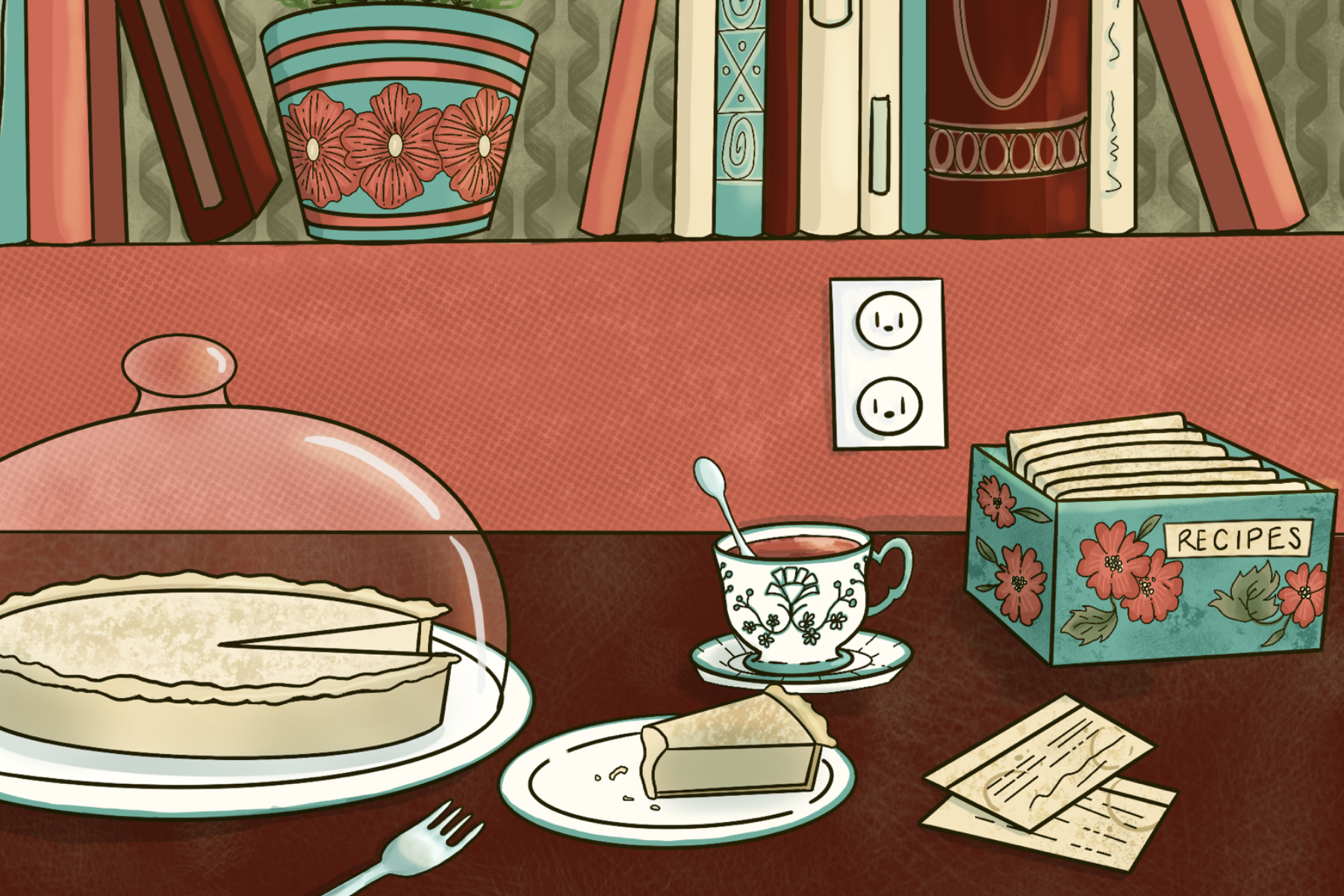TikTok creator B. Dylan Hollis gained his 4 million followers through his comedic recreations of historical recipes and discussions of all things vintage. Millions view each of his videos, which show Hollis preparing and tasting recipes from the 1900s exactly as the recipe describes. On the surface, these short videos are comedic glances at weird food trends from the past. A deeper look, however, reveals that they are also telling a cultural history.
Cultural history is the study of cultural practices and how they change over time. In the context of Hollis’ videos, the recipes he recreates are cultural practices that he shares with his audience. As people scroll through his page, they get a glimpse of how historical events affected people in the kitchen. His content is also part of a wave of creators bringing educational content to social media.
People with educational content have been particularly drawn to TikTok, as creators who teach everything from SAT prep and human anatomy to drawing techniques and musical notation continue to share their knowledge on the platform. The value of bringing education to TikTok cannot be understated; as young people spend more and more time on the app, the appearance of educational content encourages critical thought and interrupts mindless scrolling.
In Hollis’ recreation of recipes from the 1930s, the effects of the Great Depression on the American kitchen are clear. Due to the overwhelming economic struggle and staggering unemployment rates, people relied on cheap ingredients. Hollis shows this dependence in his recreation of potato candy from 1933. To make the surprisingly successful snack, one potato is boiled then mashed and mixed with 8 to 10 cups of powdered sugar. This “dough” is then rolled out and topped with peanut butter and chilled. In an economy where ingredients were limited, a dessert that uses only a potato, powdered sugar and peanut butter may have been the only dessert accessible to families at the time.
The magic ice cream recipe Hollis recreates highlights another culinary obstacle in the Great Depression — the ingredients that were available in stores were limited. Because the average American lacked the money to buy food, grocery stores in turn lacked the money to remain fully stocked. Magic ice cream functioned as a replacement in American homes for store-bought ice cream, using cheaper and more readily available ingredients. Jell-O, sugar and milk are mixed and cooled, then whipped cream is added. After freezing, the result is an “impressive” dessert, according to Hollis.
@bdylanhollis Summertime, depression style #baking #vintage #cooking #icecream
All of the recipes he shares from the Great Depression have one central theme: using what is available and affordable to make the best food possible.
Hollis’ recreations of recipes from the early 1940s show similar struggles in American kitchens due to World War II. Recipes and food availability in this era were defined by the Emergency Price Control Act of 1942. By passing this act, Congress strived to ensure equitable food distribution to all Americans to combat the food inequality caused by price inflation. The EPCA allowed the Office of Price Administration to ration food, resulting in Americans being forced to make substitutions for ingredients with what they were rationed.
Hollis’ recreation of a peanut pie includes these substitutions. He begins by mixing Karo syrup and sugar — which, as he mentions, is like mixing “sugar with your sugar.” Given that sugar was a rationed ingredient, in order to caramelize the peanuts, Karo syrup was used as another source of sugar. An egg and peanuts complete the pie’s filling. The existence of this recipe also speaks to the impact of the EPCA; classic pie fillings were also likely regulated, so peanuts had to be used as an alternative.
Another characteristic of the early 1940s was a tire shortage due to the loss of Southeast Asian rubber supply chains. Because tires were less accessible, food was more challenging to transport. The lack of functioning trucks, in addition to rationing, made fresh meat harder to come by. Many people relied on dry meats, such as chipped beef. In his recreation, which Hollis himself calls “insulting,” he begins by boiling milk and butter. He then adds dried beef, which doesn’t require refrigeration and is, therefore, easier to transport. Served on toast, chipped beef provided the taste of beef for those who didn’t have access to it raw.
@bdylanhollis
Similar to the recipes from the Great Depression, Hollis’ World War II recipes show the challenges of ingredient inaccessibility in the ’40s.
The 1960s, on the other hand, had an abundance of food, allowing for a culinary revolution. The ‘60s was an era of counterculture and pushback against the traditional practices of the 1950s. In the American kitchen, this conflict translated into an exploration of international foods and ingredients. Hollis shows a collision of tradition and change in his recreation of an avocado pie recipe from 1966. This recipe calls for a traditional pie form while using an avocado, a newly popular fruit, for the filling. While the avocado pie had a traditional form with a novel ingredient, other recipes of the ‘60s had traditional ingredients served in a new form.
One of the worst culinary crimes Hollis has recreated, the 7 Up Jell-O Salad of 1963, finds itself in the questionable gray area between tradition and innovation. Combining cream cheese, mayonnaise, lime Jell-O, 7 Up soda, canned pineapple, maraschino cherries, Cool Whip, marshmallows and walnuts and chilling this mixture in a mold overnight created a dish with, as Hollis aptly says, “so much going on.” At the time of this recipe’s conception, Jell-O was a holdover from more traditional cuisine; during World War II, sales for foods labeled as “instant” skyrocketed due to their ease of production and preparation. These companies, including those selling Jell-O, didn’t want to lose their great profits so they continued production and advertised their products as an easy meal for the American family.
@bdylanhollis My taste buds have betrayed me #vintage #baking #cooking #1960s
Presenting Jell-O in a decorative way, such as in the 7 Up Jell-O Salad, was an effect of the culinary revolution of the ‘60s. Presentation had become more important as food was seen more as a place to explore new methods and practices, rather than a burdening necessity. In both of these recreations on Hollis’ page, novel ingredients and strategies of the ‘60s are seen in tandem with traditional cuisine, showing his audience how the transitionary atmosphere of the ‘60s translated to the kitchen.
Dylan Hollis’ recreations of historical recipes primarily offer comedic relief, but his page also contains important educational content that is becoming more common to TikTok. With a general understanding of American history and a few minutes of research, his videos offer insight into how historical events affected the average American in the kitchen.


















Chipped beef on toast clearly became a practical solution for many households struggling to access fresh meat. Those interested in alternative food and delivery options during challenging times might also find useful insights on https://uber.pissedconsumer.com/review.html where various transport and service experiences are shared.